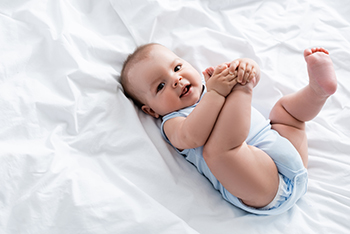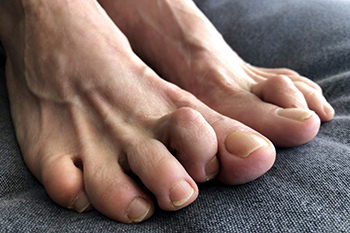
As we age, foot problems can pose significant challenges, making it harder to maintain physical activity and increasing the risk of falls. Conditions such as bunions, corns, calluses, and warts can cause discomfort and hinder mobility, impacting overall quality of life. To ensure healthy and pain-free feet, maintaining proper foot hygiene by keeping the feet clean and dry and regularly trimming toenails to prevent ingrown nails is even more important. However, seeking professional care is equally important. Regular visits to a podiatrist can help detect and address foot issues early, preventing them from worsening and reducing the risk of complications. Podiatrists can provide personalized advice on foot care, recommend appropriate footwear, and offer treatments tailored to individual needs, promoting optimal foot health and mobility in older adults. If you are elderly or taking care of someone in this age group, it is strongly suggested that you incorporate regular visits to a podiatrist into your healthcare routine.
Proper foot care is something many older adults forget to consider. If you have any concerns about your feet and ankles, contact Howard Waxman, DPM from Pleasant Valley Podiatry. Our doctor can provide the care you need to keep you pain-free and on your feet.
The Elderly and Their Feet
As we age we start to notice many changes in our body, but the elder population may not notice them right away. Medical conditions may prevent the elderly to take notice of their foot health right away. Poor vision is a lead contributor to not taking action for the elderly.
Common Conditions
Susceptible Infections
Diabetes and poor circulation can cause general loss of sensitivity over the years, turning a simple cut into a serious issue.
If you have any questions please feel free to contact one of our offices located in Willoughby Hills and Broadview Heights, OH . We offer the newest diagnostic and treatment technologies for all your foot and ankle needs.
 Polydactyly and syndactyly are different congenital foot conditions that affect the development of the toes. Polydactyly occurs when there are extra toes on the foot. This condition can vary in severity. Some people having a small extra toe that may not cause significant issues. Others may have a fully formed extra toe that requires surgical removal for functional and cosmetic reasons. Conversely, syndactyly occurs when two or more toes are fused together. This condition ranges from partial fusion, where only the skin connects the toes, to complete fusion, where the bones are fused together. Syndactyly can affect adjacent toes or more distant toes. Polydactyly and syndactyly are generally treated surgically to restore normal toe alignment and function. If you or your child has a congenital foot condition, it is suggested you consult with a podiatrist for proper evaluation and tailored management options.
Polydactyly and syndactyly are different congenital foot conditions that affect the development of the toes. Polydactyly occurs when there are extra toes on the foot. This condition can vary in severity. Some people having a small extra toe that may not cause significant issues. Others may have a fully formed extra toe that requires surgical removal for functional and cosmetic reasons. Conversely, syndactyly occurs when two or more toes are fused together. This condition ranges from partial fusion, where only the skin connects the toes, to complete fusion, where the bones are fused together. Syndactyly can affect adjacent toes or more distant toes. Polydactyly and syndactyly are generally treated surgically to restore normal toe alignment and function. If you or your child has a congenital foot condition, it is suggested you consult with a podiatrist for proper evaluation and tailored management options.
Congenital foot problems require immediate attention to avoid future complications. If you have any concerns, contact Howard Waxman, DPM of Pleasant Valley Podiatry. Our doctor can provide the care you need to keep you pain-free and on your feet.
Congenital foot problems are deformities affecting the feet, toes, and/or ankles that children are born with. Some of these conditions have a genetic cause while others just happen. Some specific foot ailments that children may be born with include clubfeet, polydactyly/macrodactyly, and cleft foot. There are several other foot anomalies that can occur congenitally. What all of these conditions have in common is that a child may experience difficulty walking or performing everyday activities, as well as trouble finding footwear that fits their foot deformity. Some of these conditions are more serious than others. Consulting with a podiatrist as early as possible will help in properly diagnosing a child’s foot condition while getting the necessary treatment underway.
What are Causes of Congenital Foot Problem?
A congenital foot problem is one that happens to a child at birth. These conditions can be caused by a genetic predisposition, developmental or positional abnormalities during gestation, or with no known cause.
What are Symptoms of Congenital Foot Problems?
Symptoms vary by the congenital condition. Symptoms may consist of the following:
Treatment and Prevention
While there is nothing one can do to prevent congenital foot problems, raising awareness and receiving neonatal screenings are important. Early detection by taking your child to a podiatrist leads to the best outcome possible.
If you have any questions please feel free to contact one of our offices located in Willoughby Hills and Broadview Heights, OH . We offer the newest diagnostic tools and technology to treat your foot and ankle needs.

Daily wear and tear can harm your toes, which are essential for balance and movement. Hammertoe is a toe problem where the middle joint bends upward, making the toe look like a hammer. Toes have muscles on top to stretch them and muscles underneath to bend them. Weak bottom muscles can lead to an upward bend at the middle joint, causing a hammertoe. This can hurt while walking and may affect balance. Symptoms include a bent toe that will not relax, swelling, corns, calluses, pain while walking, and changes in balance or walking style. Other toe issues like claw toes, mallet toes, and bunions exist, often alongside hammertoes. Risk factors include foot shape, medical conditions, like diabetes, arthritis, wrong shoes, and foot injuries. If you have a hammertoe that is causing discomfort, it is suggested that you schedule an appointment with a podiatrist for guidance.
Hammertoe
Hammertoes can be a painful condition to live with. For more information, contact Howard Waxman, DPM from Pleasant Valley Podiatry. Our doctor will answer any of your foot- and ankle-related questions.
Hammertoe is a foot deformity that affects the joints of the second, third, fourth, or fifth toes of your feet. It is a painful foot condition in which these toes curl and arch up, which can often lead to pain when wearing footwear.
Symptoms
Causes
Genetics – People who are genetically predisposed to hammertoe are often more susceptible
Arthritis – Because arthritis affects the joints in your toes, further deformities stemming from arthritis can occur
Trauma – Direct trauma to the toes could potentially lead to hammertoe
Ill-fitting shoes – Undue pressure on the front of the toes from ill-fitting shoes can potentially lead to the development of hammertoe
Treatment
Orthotics – Custom made inserts can be used to help relieve pressure placed on the toes and therefore relieve some of the pain associated with it
Medications – Oral medications such as anti-inflammatories or NSAIDs could be used to treat the pain and inflammation hammertoes causes. Injections of corticosteroids are also sometimes used
Surgery – In more severe cases where the hammertoes have become more rigid, foot surgery is a potential option
If you have any questions please contact one of our offices located in Willoughby Hills and Broadview Heights, OH . We offer the newest diagnostic and treatment technologies for all your foot and ankle needs.
 Athlete’s foot is a fungal infection that causes blisters and peeling skin on the feet. This contagious infection is generally treated with topical antifungal medications. If left untreated, athlete's foot can lead to more severe problems than the itching and redness associated with the infection. If ignored, the infection can spread to other parts of the foot, such as the toenails or the soles of the feet. As the condition progresses, it may result in painful blisters, cracks, and open sores, making daily activities like walking or standing uncomfortable. In some cases, untreated athlete's foot can contribute to the development of secondary bacterial infections, which can include swollen and painful feet. These secondary infections can also cause fever and lymph node infections. Some patients also experience allergic reactions to the initial fungal infection, causing blisters on the infected area. Podiatrists can prescribe antifungal medications and provide more information on foot hygiene to effectively quell a case of athlete’s foot. If you suspect you have athlete’s foot, it is suggested that you seek prompt treatment from a podiatrist to treat the infection and prevent it from worsening.
Athlete’s foot is a fungal infection that causes blisters and peeling skin on the feet. This contagious infection is generally treated with topical antifungal medications. If left untreated, athlete's foot can lead to more severe problems than the itching and redness associated with the infection. If ignored, the infection can spread to other parts of the foot, such as the toenails or the soles of the feet. As the condition progresses, it may result in painful blisters, cracks, and open sores, making daily activities like walking or standing uncomfortable. In some cases, untreated athlete's foot can contribute to the development of secondary bacterial infections, which can include swollen and painful feet. These secondary infections can also cause fever and lymph node infections. Some patients also experience allergic reactions to the initial fungal infection, causing blisters on the infected area. Podiatrists can prescribe antifungal medications and provide more information on foot hygiene to effectively quell a case of athlete’s foot. If you suspect you have athlete’s foot, it is suggested that you seek prompt treatment from a podiatrist to treat the infection and prevent it from worsening.
Athlete’s Foot
Athlete’s foot is often an uncomfortable condition to experience. Thankfully, podiatrists specialize in treating athlete’s foot and offer the best treatment options. If you have any questions about athlete’s foot, consult with Howard Waxman, DPM from Pleasant Valley Podiatry. Our doctor will assess your condition and provide you with quality treatment.
What Is Athlete’s Foot?
Tinea pedis, more commonly known as athlete’s foot, is a non-serious and common fungal infection of the foot. Athlete’s foot is contagious and can be contracted by touching someone who has it or infected surfaces. The most common places contaminated by it are public showers, locker rooms, and swimming pools. Once contracted, it grows on feet that are left inside moist, dark, and warm shoes and socks.
Prevention
The most effective ways to prevent athlete’s foot include:
Symptoms
Athlete’s foot initially occurs as a rash between the toes. However, if left undiagnosed, it can spread to the sides and bottom of the feet, toenails, and if touched by hand, the hands themselves. Symptoms include:
Diagnosis and Treatment
Diagnosis is quick and easy. Skin samples will be taken and either viewed under a microscope or sent to a lab for testing. Sometimes, a podiatrist can diagnose it based on simply looking at it. Once confirmed, treatment options include oral and topical antifungal medications.
If you have any questions, please feel free to contact one of our offices located in Willoughby Hills and Broadview Heights, OH . We offer the newest diagnostic and treatment technologies for all your foot care needs.